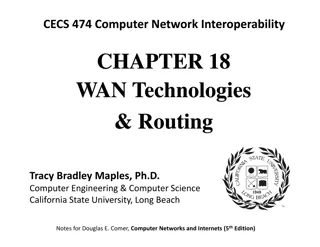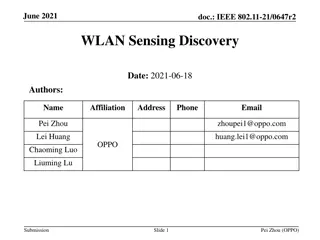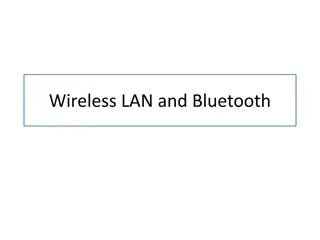
Understanding Local Area Networks (LAN) and Their Topologies
Explore the world of local area networks (LAN) through this insightful content covering LAN basics, network topologies such as star, bus, and ring, advantages, and disadvantages. Learn about resource sharing, security, cost, and speed benefits of LAN setups.
Download Presentation

Please find below an Image/Link to download the presentation.
The content on the website is provided AS IS for your information and personal use only. It may not be sold, licensed, or shared on other websites without obtaining consent from the author. If you encounter any issues during the download, it is possible that the publisher has removed the file from their server.
You are allowed to download the files provided on this website for personal or commercial use, subject to the condition that they are used lawfully. All files are the property of their respective owners.
The content on the website is provided AS IS for your information and personal use only. It may not be sold, licensed, or shared on other websites without obtaining consent from the author.
E N D
Presentation Transcript
www.studymafia.org Seminar On LAN WAN MAN Submitted To: www.studymafia.org www.studymafia.org Submitted By:
Content Networking LAN Star Topology Bus Topology Ring Topology WAN MAN Conclusion
Networking: A computer network is a communication that allows sharing information and resource. Types of Networking Three major types of networking: a 1 ) LAN 3 ) WAN 2 ) MAN Other types of networking: i ) Personal Aria Network (PAN) ii ) Home Network iii ) Enterprise Private Network
LAN (Local Area Network ) A local area network is a computer network that connects computer in a limited area such as home, school, office building. A LAN is useful for sharing resource like files, printers, games and other application.
Network Topology Star Topology Bus Topology Ring Topology
Star Topology In a star network devices are connected to a central computer, called a hub. Nodes communicate across the network by passing data through the hub.
Ring Topology A local-area network (LAN) whose topology is a ring. That is, all of the nodes are connected in a closed loop. Messages travel around the ring, with each node reading those messages addressed to it.
Bus Topology In networking a bus is the central cable -- the main wire -- that connects all devices on a local-area network (LAN). It is also called the backbone. This is often used to describe the main network connections composing the Internet. Bus networks are relatively inexpensive and easy to install for small networks. Ethernet systems use a bus topology.
Advantages of LAN Few advantages of LAN are mentioned below: Resource sharing E-mail Security Security Cost Speed
Disadvantages of LAN Disadvantages of LAN are mentioned below: Cables may break File server may break Needs administrative time Expensive to install
WAN (Wide Area Network) A wan spans a large geographical area, such as a state, country. WAN connects multiple smaller networks such as local area network or metro area networks.
WAN Types WAN Types SD- WAN X.25 SONET Leased line ISDN Frame Relay DSL Dial-up Cable modem ATM
MAN (Metropolitan (Metropolitan Area Area Network) Network) A metropolitan area network is a network that interconnects users with computer resource in a geographical area or a region than that covered by even a large local area network but smaller area network covered by WAN . It is used for interconnection of several local area networks by bridging them backbone line.
Conclusion Conclusion LAN is a private network used in small offices or homes usually within 1km range with high speed transfer data rate and fulltime service connectivity in low cost. WAN covers a large geographical area for example, a country or a continent. Its data transfer data is usually low as compared to LAN, but it is compatible with a variety of access lines and has an advanced security. MAN covers an area bigger than LAN within a city or town and serves as an ISP for larger LAN. It uses optical fibers or wireless infrastructure to link the LANs therefore, providing high speed regional resource sharing.
Reference Reference www.google.com www.wikipedia.com www.studymafia.org






















